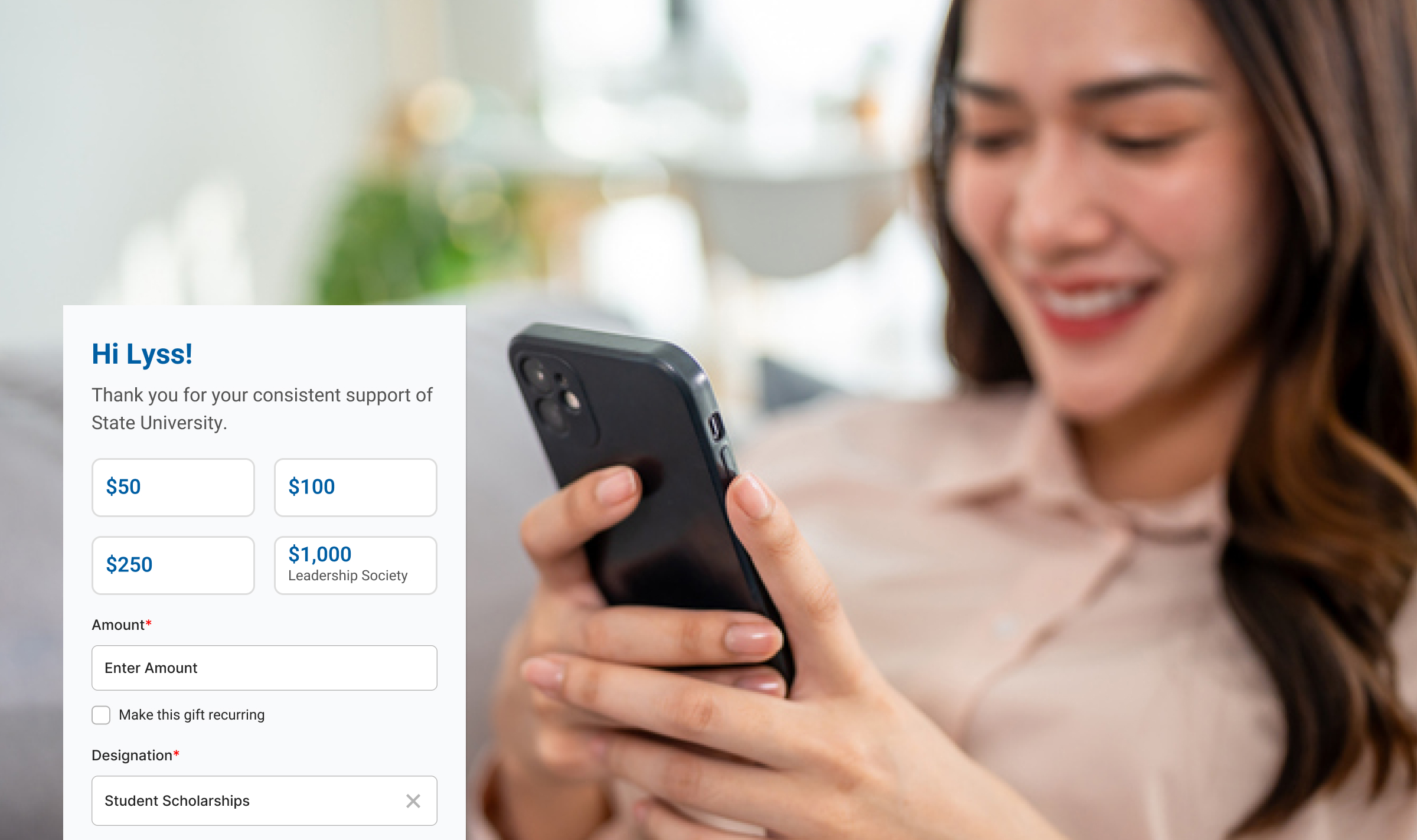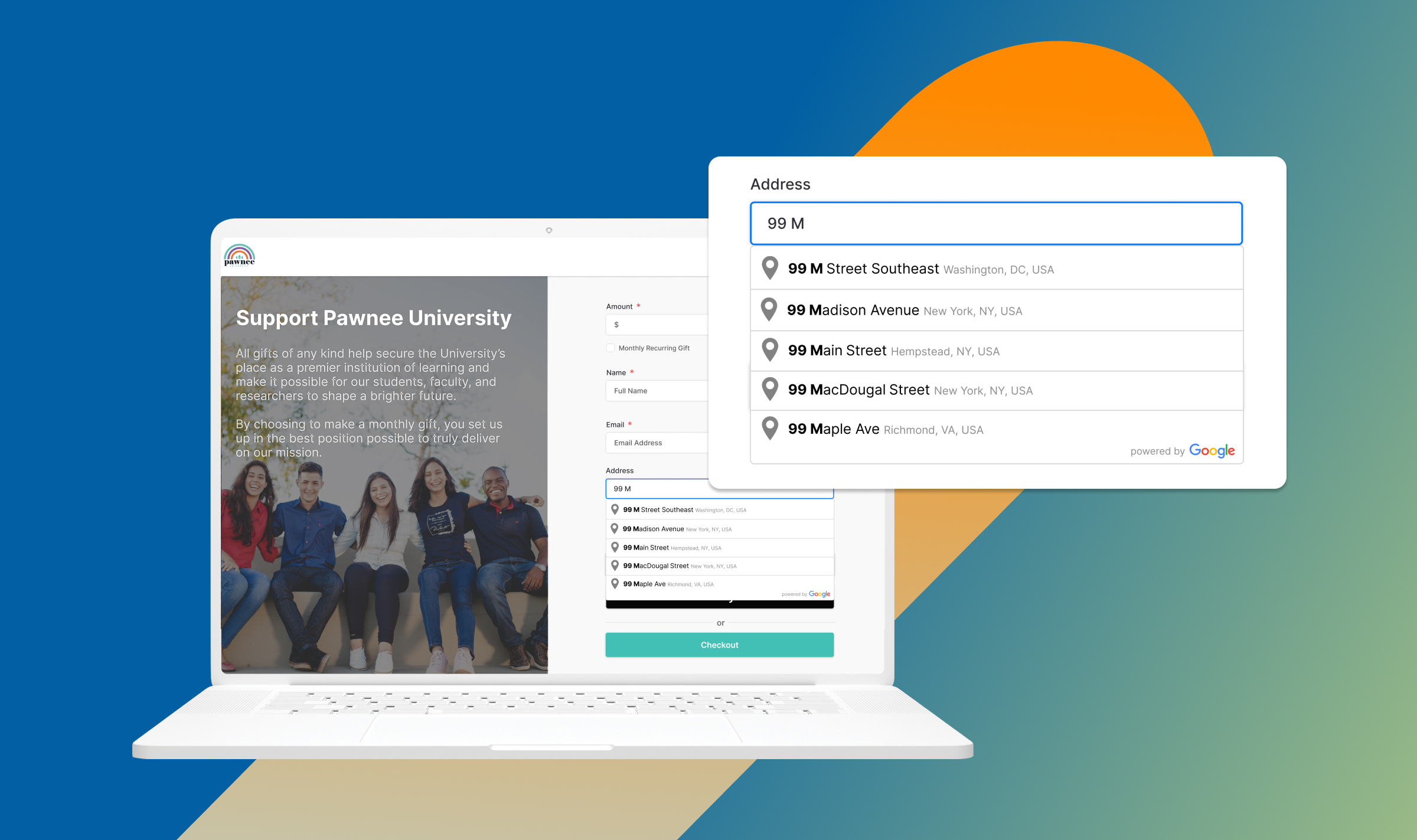Fundraising Text Message Examples and Best Practices
Texting is one of the hottest communication channels for educational fundraisers and if you haven’t dipped your toes into the waters of short message service (SMS) marketing yet, there’s never been a better time. Fundraising text messages check all the boxes for effective outreach: they’re easy to personalize, segment, and scale—and surprisingly cost-effective too. Plus, the open and read rates blow every other channel out of the water.
Not only do texts have a 99 percent open rate, but 95 percent of texts are read within three minutes of being sent. So if you have fundraising text messages you want delivered and read at a specific time, there’s really no better channel than texting.
Plus the average SMS click-through rate is high too. So not only will texting help you get your message in front of more people faster, but it will also drive more traffic to your linked campaign and event pages, giving forms, and other assets.
Beyond incredible open and engagement rates, fundraising text messages can also be a more personal way to communicate with constituents—especially students and young alumni for whom texting is often their preferred communication channel.
Below, we’ll explore best practices, share sample fundraising text messages, and show you savvy ways to make texting part of your multichannel fundraising strategy.
Make it easy for recipients to opt out
The Telephone Consumer Protection Act (TCPA) is a federal law that governs how for-profit retailers, politicians, and nonprofit organizations conduct text message marketing. For-profit businesses must get prior written consent from consumers they’re targeting in order to legally engage in SMS marketing. Fortunately, the consent requirement bar for nonprofit institutions like schools is much lower.
If a donor, volunteer, or constituent has provided their phone number to your nonprofit, they have essentially opted in to receiving text messages on your organization’s behalf. That said, it’s still a best practice to make sure that the people you’re reaching out to actually want to hear from you in this way.
A good way to ensure your texts are well received is to set clear expectations up front. If you’re reaching out to someone for the first time, briefly introduce yourself, state your business, and offer the recipient the opportunity to opt out. That’s right, let them opt out. It sounds counterintuitive, but it’s really the polite thing to do—and if you were a for-profit business it would be the law.
Since the character limit for a standard text message is only 160 characters, you’ll want to keep your initial outreach short and your opt-out language shorter. Ask recipients to respond with language like: “STOP,” “END,” “CANCEL,” “UNSUBSCRIBE,” or “QUIT.”
For example, your first message could be as simple as this: “Hi. This is {{First Name}} texting on behalf of {{School Names}}. Reply STOP to opt-out.” Then follow up with a specific request or a link to the information, giving form, campaign page, or event registration page you want to share.
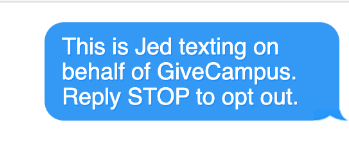
In the event that a donor or volunteer opts out of your communication, immediately remove them from your outreach cadence and be sure to send a message confirming their removal from your list. They’ve made their preference clear and you want them to know you respect their wishes.
Of course, the best way to avoid getting opt-out responses is to make sure you’re targeting the right audience at the right time with the right message. You can do that by segmenting your SMS outreach and making it as personal and relevant as possible.
Segment your lists
The more relevant your message is the less likely people are to opt out, so it’s important to carefully tailor your outreach. Segmenting your lists based on donor interest, giving history, affiliation, and more can help you reach the right people with a message that resonates and is subsequently well received.
Robust SMS marketing solutions like GiveCampus make it easy for you to segment lists based on donor status, class year, participation in a campaign, and more to help you deliver highly targeted messages.
For example, say you’re in the final days of a campaign and want to message young alumni who haven’t made a gift yet. On the GiveCampus platform, you can use the query builder to quickly and easily generate a list targeting that specific group of LYBUNTs in real-time and then message them in a way that feels personal and meaningful.

Prove that you’re a human
If people think you’re a robot, they’re likely to ignore your messages, or worse—opt out entirely—so keep it real.
If you want your communications to sound more personal and authentic, consider the sender. People are naturally more receptive and responsive when they hear from a friend, colleague, or peer. Ideally, the person reaching out on your institution’s behalf should have something in common with the person they’re messaging.
If you’re running a parent campaign, ask a fellow parent to do the SMS outreach. If you’re planning a reunion, ask a fellow classmate or alum to send the invite. We’ve said it many times before on this blog but it bears repeating: A peer-to-peer ask is 300x more effective than an institutional ask. It’s also less likely to be dismissed as a robo-text.
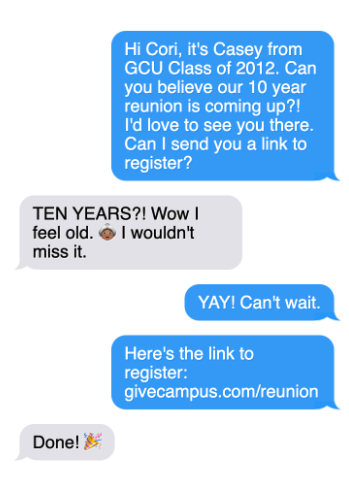
Be ready with a relevant response—and reply promptly
Text messaging is a conversation. Once you engage a constituent via text you should be prepared to respond in a timely fashion. Creating a text message response tree can help—especially if you have students and volunteers doing the outreach.
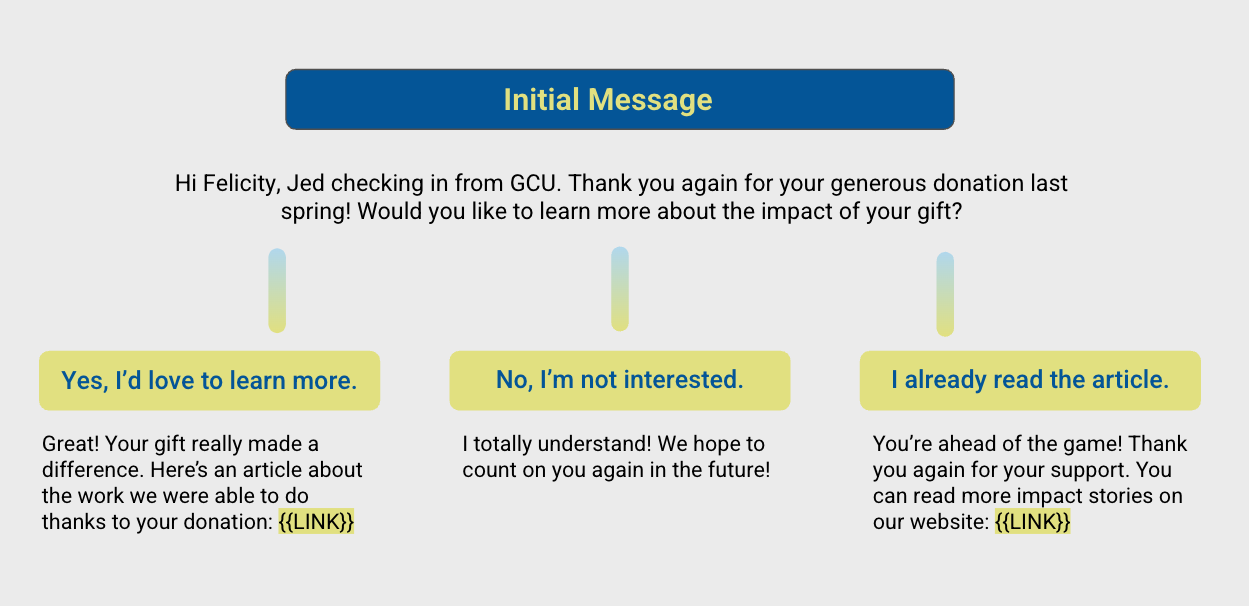
Platforms like GiveCampus allow you to build templated responses to help you and those who may be texting on behalf of your institution to reply promptly and professionally. And don’t worry, just because you’re using templates doesn’t mean senders can’t put their personal spin on the conversation. You can create canned messages that are easily customizable. Just keep your responses general, engaging, human, and diverse. And be sure to include opt-out language where appropriate (e.g., if you get a less than receptive response to your outreach.)
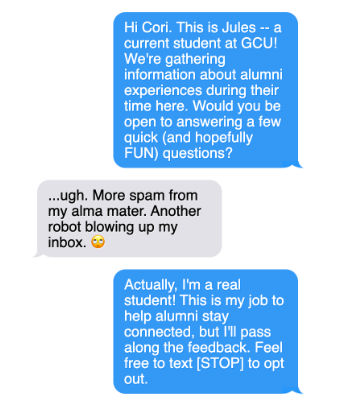
Make sure your giving form is mobile optimized
Generally speaking, more than half of all online gifts today are made on a mobile device. But when you’re starting the conversation via SMS and linking directly to your giving form in your text message, you know donors will be using their phone to make their gift. So do your donors (and your school) a favor and make it easy for them. Make sure your giving form has been optimized for mobile. You don’t want to lose donors in the last mile due to a poor checkout experience.
Giving forms by GC Online Giving actually go a step further and employ a mobile-first design. That means our forms are specifically optimized for engagement on a smartphone or handheld device and then adapted for the desktop. So things like the size and placement of fields and buttons have been expressly designed and rigorously tested to ensure they are easy to access. We also make sure that content is tappable within the thumb zone (where your thumbs can reach) and that features like Google auto-complete, mobile wallets, and more are baked right into the form so people can quickly make their gift and move on.

Ready to take a deeper dive?
Find out how your school can make SMS marketing part of a winning multichannel fundraising strategy. Schedule a personalized GiveCampus demo with a fundraising expert today.


